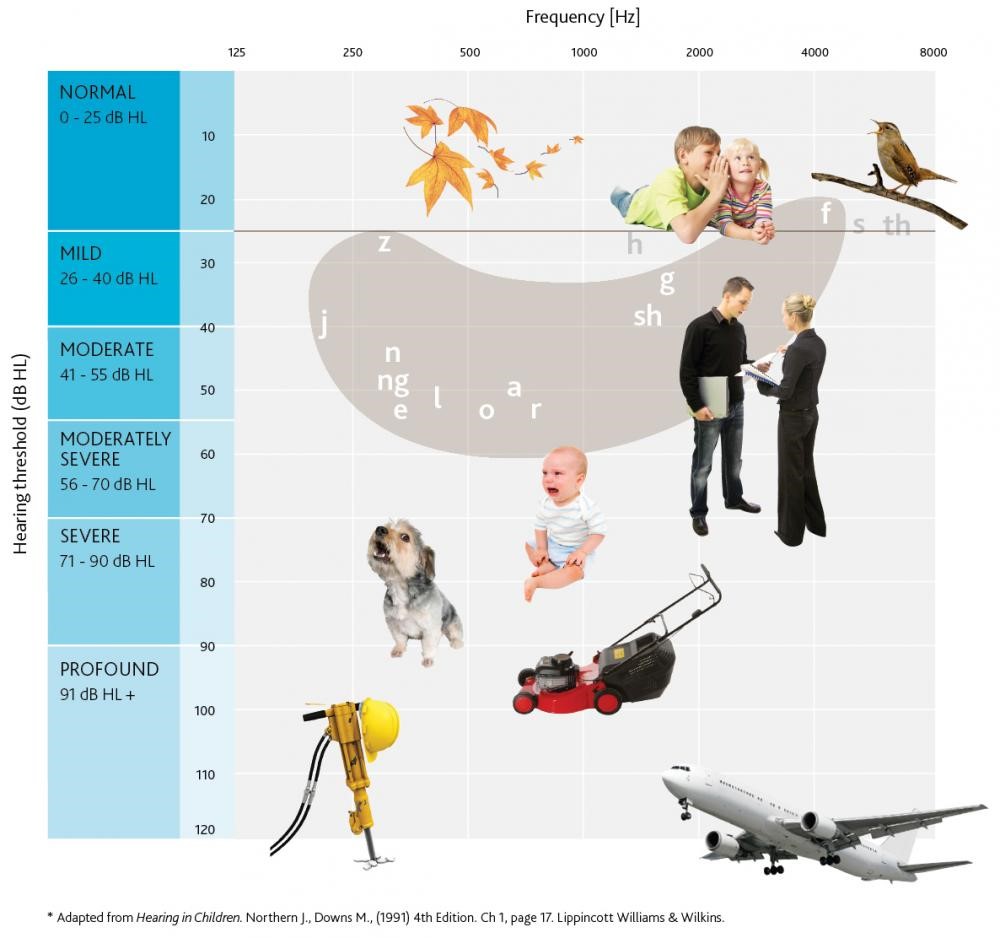Types and causes of hearing loss
Find out more about the different types of hearing loss and what can cause them.

Page contents
- The types and causes of hearing loss.
- Different degrees of hearing loss.
- Types of treatment.
A hearing specialist can help to determine the type of hearing loss, its cause and the types of treatment suitable.
Types of hearing loss
Sensorineural hearing loss occurs when the inner ear (cochlea) or hearing nerve is damaged or does not work properly. With sensorineural hearing loss, sounds are not only softer, but also difficult to understand – especially when it is noisy.
Common causes include:
-
congenital hearing loss
-
ageing (also known as presbyacousia)
-
exposure to loud noise
-
head injury
-
genetics
-
Ménière's disease
-
adverse reaction to medications.
Treatment options include:
-
hearing aids
High-frequency hearing loss is a type of sensorineural hearing loss where it may be possible to hear some sounds with a lower pitch, but not high-frequency sounds like birds chirping.
Common causes include:
-
congenital hearing loss
-
ageing (presbyacousia)
-
exposure to loud noise
-
head injury
-
genetics
-
Ménière's disease
-
adverse reaction to medications.
Treatment options include:
-
hearing aids
Sensorineural hearing loss can occur in one or both ears. If the loss is in one ear, it is often referred to as unilateral hearing loss or single-sided deafness. This is when there is little or no hearing in one ear, but normal hearing in the other ear.
Common causes include:
-
viral infections
-
Ménière's disease
-
adverse reaction to medications
-
head or ear injuries
-
many other unknown reasons.
Treatment options include:
-
CROS hearing aids
Conductive hearing loss occurs when damage to the outer ear or middle ear blocks sound vibrations from reaching the inner ear, or cochlea. With this type of hearing loss, ears may feel plugged and speech may sound muffled, especially if there is a lot of background noise.
Common causes include:
- malformations at birth such as Microtia and Atresia
-
syndromes such as Down, Goldenhar and Treacher Collins
-
chronic mastoiditis or middle ear infections
-
skin growth or cyst (cholesteatoma)
-
draining ears
-
chronic ear infections
-
previous ear surgeries
-
benign tumors.
Treatment options include:
-
medication
-
surgery
-
hearing aids
Mixed hearing loss refers to a combination of conductive and sensorineural hearing loss. This means there may be damage in both the outer or middle ear and the inner ear.
Common causes include any of the causes of conductive hearing loss plus any of the causes of sensorineural hearing loss.
Treatment options include:
-
medication
-
surgery
-
hearing aids
Degrees of hearing loss
Understanding the degree of hearing loss is essential to identifying the right treatment.
For example, hearing aids may be indicated for individuals with mild to moderate hearing loss. Hearing implants may be suitable for those with moderate to profound hearing loss.
An audiogram (presented below) may be used by a hearing specialist to determine where sounds fall in loudness and frequency scales to help understand what an individual may or may not hear.
Mild hearing loss
Speech may be heard, but soft sounds are hard to hear, such as whispers or the consonants on the end of words like 'shoes' or 'fish'.
Moderate hearing loss
Another person speaking may be heard at a normal level, but there may be difficulty understanding what the person is saying. Vowels within a sentence may be heard, but perhaps not the consonants. It may therefore be difficult to understand the whole sentence.
Severe hearing loss
Little or no speech of a person talking at a regular level and only some loud sounds may be heard. Very loud sounds, such as a car horn, may not cause surprise as they would for a person with normal hearing.
Profound hearing loss
No speech may be heard, or only loud sounds and their vibrations.
Understanding the audiogram
A hearing health professional can map the type and degree of hearing loss on a chart called an audiogram. Here are more details about audiograms.
Find a hearing implant specialist
Disclaimer
Please seek advice from your health professional about treatments for hearing loss. Outcomes may vary, and your health professional will advise you about the factors which could affect your outcome. Always follow the directions for use. Not all products are available in all countries. Please contact your local Cochlear representative for product information.
For a full list of Cochlear’s trademarks, please visit our Terms of Use page.

